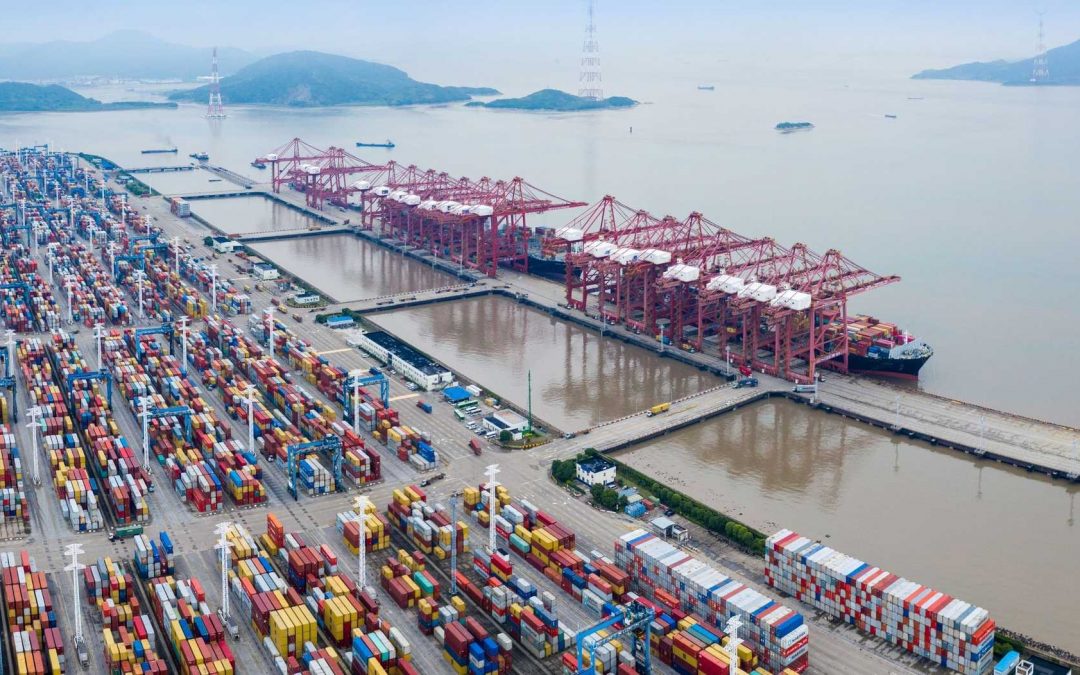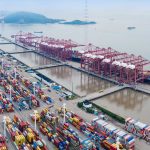Rates for shipping containers from east Asia and China to the US ticked slightly lower this week, while global average rates dropped by 2% as the Lunar New Year holiday began in China.
This period usually sees a significant reduction in shipping volumes as factories shut down or cut production in anticipation of the holiday, leading to lower demand for shipping services.
Rates to both US coasts fell by 1%, according to supply chain advisors Drewry and as shown in the following chart.
Drewry expects spot rates to decrease slightly in the coming week due to the increase in capacity created by the LNY slowdown.
The following chart from Drewry shows the decrease in global average rates.
Judah Levine, head of research at online freight shipping marketplace and platform provider Freightos, said transpacific rates should continue to face downward pressure before likely rebounding in mid-February.
Transpacific rates to the West Coast have dipped by 17% since mid-January, according to Freightos data, but are still more than double levels seen in 2019.
Continued diversions away from the Red Sea and the Suez Canal continue to absorb capacity across the market.
Even as progress is being made with a ceasefire in the Israel-Hamas conflict, shipping companies are still avoiding the shorter route.
Global shipping major Maersk said this week that it will continue to avoid the Suez Canal and Red Sea until safe passage through the area is ensured for the longer term to optimize stability and certainty across supply chains.
Container ships and costs for shipping containers are relevant to the chemical industry because while most chemicals are liquids and are shipped in tankers, container ships transport polymers, such as polyethylene (PE) and polypropylene (PP), are shipped in pellets.
They also transport liquid chemicals in isotanks.
TARIFFS
Frontloading of volumes to get ahead of proposed tariff hikes is likely over as US President Donald Trump said on Friday that tariffs will begin on 1 February for Canada, Mexico and China.
“This will keep ocean volumes and rates to the US higher than they otherwise would be in Q1 and possibly into Q2 depending on the timing of the increases,” Levine said. “This pull-forward could also be felt in lower volumes and rates after tariffs are introduced.”
LIQUID TANKER SPOT RATES STEADY
Rates for liquid chemical tankers ex-US Gulf held steady this week.
The transatlantic eastbound route saw some activity with monoethylene glycol (MEG) and caustic soda fixed to the Mediterranean, and urea ammonium nitrate (UAN) and ammonia to the UK.
There are a few smaller parcels moving on the route, brokers said, but nothing significant as it appears some trader volumes are still being affected in the aftermath of the recent winter storm.
On the USG-Asia route, part cargo space has tightened across the regular players, a broker said, with Odfjell showing only 1,000-2,000 tonnes of available space for February.
The USG to South America trade lane was quiet this week, brokers said, with contract of affreightment (COA) nominations steady.
Source: By Adam Yanelli, ICIS,






